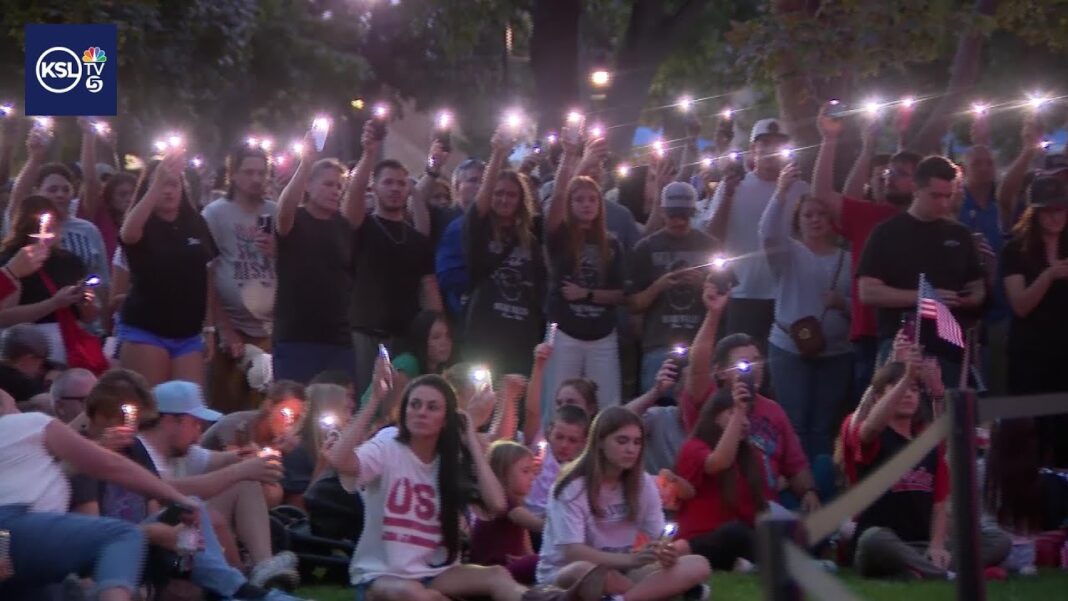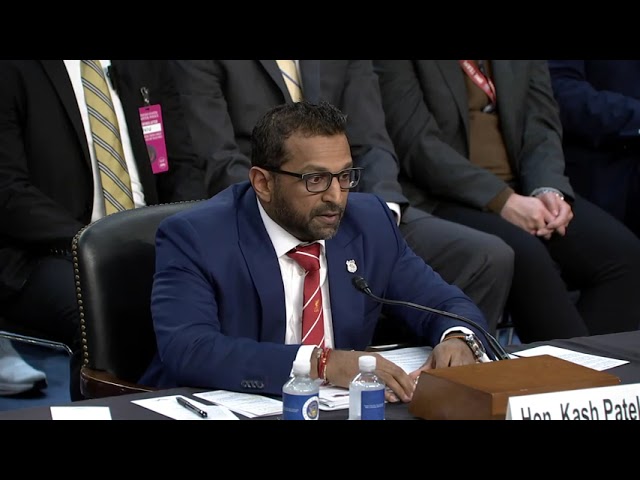Prosecutors have charged suspect Tyler Robinson with aggravated murder and six other counts.
New details have emerged in the assassination of Charlie Kirk by suspect Tyler Robinson following the alleged shooter’s apprehension by authorities.
On Sept. 10, Kirk was speaking to a large crowd of students at Utah Valley University (UVU) when Robinson allegedly shot him in the neck, killing the Christian conservative political commentator.
The attack shocked the nation and has prompted condemnations from both sides of the political aisle—as well as new emphasis on the importance of free speech and standing against political violence.
It took authorities days to find and apprehend Robinson, who was arrested after sharing details of the crime with his friends and family.
Though many details remain to be released, new information has emerged in the case in the days since Robinson was apprehended.
Here’s what we know about the attack.
Suspect Arrived Around 25 Minutes Earlier
According to a document charging Robinson with multiple crimes related to the attack, surveillance footage and images show that Robinson arrived on campus from the north at 11:51 a.m. local time, approximately 25 minutes before the shooting.
He was wearing a black shirt with an American flag in the center, a dark baseball cap, and sunglasses.
The suspect “[kept] his head down and rarely [raised] his head enough to get a clear image of his face.” He walked with “an unusual gait” as he made his way across campus, showing “very little bending in his right leg”—which authorities say is “consistent with a rifle being hidden in his pants.”
The suspect crossed campus until he arrived at the Losee Center, a multi-tiered building near the middle of campus housing a student resource center. Surveillance footage shows him hoisting himself onto the building and running to its southern side.
Shooter Was About 160 Yards From Kirk
Robinson’s position atop the Losee Center was about 160 yards away from Kirk, who was sitting in the center of an amphitheater-like area at UVU and taking questions from the audience under the shade of his organization’s “Prove Me Wrong” tent.
It was the first of multiple stops to college campuses that Kirk had planned for his “American Comeback” tour, organized by his group Turning Point USA.
While answering a question related to mass shootings, the sound of a single shot rang out. Videos posted on social media showed Kirk was struck in the neck.
Police Quickly Identified Potential Shooting Location
According to the same document, police quickly identified the potential location where the shot was taken.
Authorities said that at the moment of the shot, a UVU police officer was watching the crowd from an elevated position.
“As soon as he heard the shot,” the charging document said, the officer “began to scan the area for threats,” and quickly inferred based on the gunshot’s sound that the weapon used in the attack had been a rifle.
The officer noticed a roof around 160 yards from Kirk’s speaking position and “rushed there to look for evidence.”
However, Robinson had already fled. Video footage shows Robinson running diagonally from the southern side of the building to a shorter drop on the building’s northern side.
Scouting an area of the roof on the southern side of UVU’s Losee Center, the officer identified a clear line of sight to Kirk. The officer also noticed disturbances in the gravel around the area that were “consistent with a sniper having lain on the roof.”
Weapon and Ammo Found in Nearby Woods
Following Robinson’s movements after he dropped off of the roof, investigators discovered the rifle and ammunition used in the attack wrapped in a towel and cached away in a small wooded area just northeast of the Losee Center.
The weapon used in the attack was identified as a bolt-action rifle containing a single spent round and three unspent rounds. No shell casings were discovered on the roof, indicating that a bolt-action weapon rather than an auto-loading weapon was used in the attack.
After they were discovered, the rifle, ammunition, and towel were sent for forensic processing, which confirmed DNA consistent with Robinson’s on the trigger and other parts of the rifle, the fired cartridge casing, two of the three unfired cartridges, and the towel.
Messages Inscribed on Rounds
Inscribed on each of the bullets were messages referencing dated internet jokes.
The note on first, spent round read: “NoTices Bulge OWO What’s This?”
The note on the second read “Hey Facist! Catch!” and contained a combination of arrow symbols referencing the video game “Helldivers 2.”
The third read, “O Bella ciao, Bella ciao, Bella ciao, Ciao, ciao!” That’s a reference to the anti-fascist Italian song “Bella Ciao.”
The fourth read “If you Read This, You Are GAY Lmao.”
Robinson Turned Himself In, Confessed
According to authorities, Robinson—accompanied by his parents and a friend—went to the Washington County Sheriff’s Office to turn himself in on the evening of Sept. 11.
That followed a manhunt that had lasted 33 hours, with authorities offering a $100,000 reward for information leading to the suspect’s arrest.
Shortly after the shooting, investigators began to share photos of the suspected assassin.
Robinson’s mother told police that when she saw these photos, she thought the person in the photo resembled her son. Concerned, she called Robinson, who told her that he had been home sick.
Robinson’s mother raised her concerns with her husband, Robinson’s father.
He agreed that the photos resembled their son, and also thought the rifle was similar to one given to his son.
Robinson’s father called him to discuss the situation. Robinson initially implied that he would rather commit suicide than turn himself in; however, he was eventually persuaded to come to their home, and from there to turn himself in.
Robinson Became More Political Recently: Family
According to the charging document, members of Robinson’s family said Robinson had become more political in the months leading up to the shooting, “becoming more pro-gay and trans-rights oriented.”
In that time, he had begun to date his roommate, a male who identifies as a transgender female. Robinson’s mother said, according to the charging document, that his decision to begin dating this individual prompted several family discussions, particularly between Robinson and his father, “who have very different political views.”
Before the shooting, Robinson allegedly accused Kirk of spreading hate.
According to the charging document, when his parents asked “why he did it, Robinson explained there is too much evil and [Kirk] spreads too much hate.”
Attack Planned ‘A Bit Over a Week’ in Advance
Robinson said in messages to his roommate that he had planned the attack “a bit over a week,” according to the charging document.
Robinson texted the roommate on Sept. 10, telling him to look underneath a keyboard in Robinson’s room. Underneath the keyboard was a note which allegedly read, “I had the opportunity to take out Charlie Kirk and I’m going to take it.”
When the roommate inquired whether Robinson was the one who had killed Kirk, Robinson replied, “I am, I’m sorry.”
Asked why he did it, Robinson said, “I had enough of his hatred. Some hate can’t be negotiated out.”
Though Robinson asked his roommate not to speak to police, Utah Gov. Spencer Cox said the individual has been “very cooperative” with investigators.
“What we have learned specifically is that this person did not have any knowledge, was shocked when they found out about it,” Cox said Sunday on NBC News’ “Meet the Press.”
Robinson Charged With Seven Counts
In the charging document, authorities announced that Robinson would be charged with seven different counts.
The first count is aggravated murder, and pertains to the primary crime in the case, Kirk’s killing, and its manner, which “exposed others, in addition to Mr. Kirk, to a great risk of death.” Relatedly, the second count is for felony discharge of a firearm.
Robinson is also charged with two counts of obstruction of justice for his efforts to hide evidence, including the rifle and his clothing, after the shooting.
He was also charged with two counts of witness tampering for his efforts to have his roommate delete text messages and refuse to cooperate with police.
Finally, he was charged with carrying out a violent offense in the presence of children under the age of 14.
At a Tuesday hearing, his first appearance related to the assassination, a judge noted that several of the charges are eligible for enhanced sentencing if jurors rule that Robinson committed the crime on the basis of political motives and if jurors agree that he committed the crimes in the presence of children.
Death Penalty
Robinson’s charges make him eligible for the death penalty, and Utah authorities have made clear since the day of the assassination that they intend to pursue the maximum penalty in the case.
Robinson did not enter a plea during his Tuesday hearing, and does not yet have legal representation.
Utah County Attorney Jeff Gray formally filed a notice of his intention to seek the death penalty on Tuesday, precluding Robinson from being eligible for bail.
Speaking about the capital nature of the case, Gray said, “I do not take this decision lightly, and it is a decision I have made independently as county attorney, based solely on the available evidence and circumstances and nature of the crime.”
By Joseph Lord







